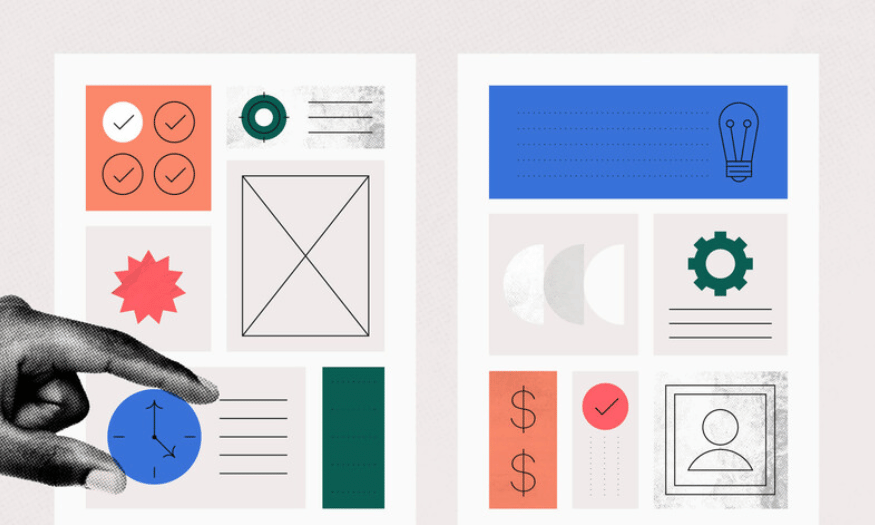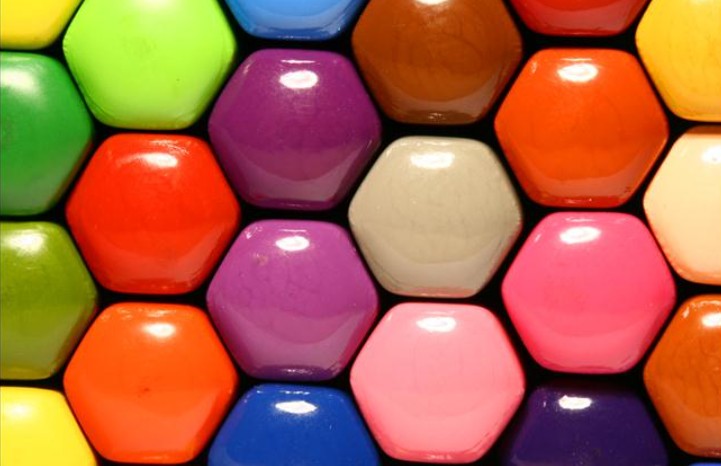Best Selling Products
What is a Brief? How to Create an Effective Design Brief
Nội dung
- 1. What is Brief?
- 2. Brief Classification
- 2.1 Communication Brief
- 2.2 Creative Brief
- 3. How do Designers read Briefs?
- 3.1 Project objectives
- 3.2 Budget, progress
- 3.3 Target audience
- 3.4 Project Scope
- 3.5 Overall style
- 4. Preliminary steps to an effective Design Brief
- 4.1 Step 1: Define the design project
- 4.2 Step 2: Find the right designer for the project
- 4.3 Step 3: Have a conversation – designer and client
- 4.4 Step 4: Final design brief
- 5. What does a Design Brief look like?
- 6. Why is a Design Brief important?
- 7. The Perfect Design Brief Tool
- 8. Conclusion
In the process of product development and design, an indispensable factor is the design brief. So what is a "brief"? It is not just a document but also a strategic tool to help guide and communicate information between stakeholders. An effective design brief will help designers clearly understand the customer's requirements, thereby creating a product that meets expectations. In this article, let's explore with Sadesign the concept of brief, its importance, and the steps to create a perfect design brief.

In the process of product development and design, an indispensable factor is the design brief. So what is a "brief"? It is not just a document but also a strategic tool to help guide and communicate information between stakeholders. An effective design brief will help designers clearly understand the customer's requirements, thereby creating a product that meets expectations. In this article, let's explore with Sadesign the concept of brief, its importance, and the steps to create a perfect design brief.
1. What is Brief?
A brief, also known as a design brief, is a core document that helps shape and manage a design project. It is more than just a list of requirements; it is a powerful strategic tool that allows designers and clients to agree on goals and direction. A well-crafted brief will clearly define the scope, scale, and key details of the project, and will serve as the foundation for all design decisions.
When a brief is well-written, it becomes a guiding light for the creative process. It not only helps designers have a clear understanding of the client’s expectations, but also helps them avoid unnecessary roadblocks along the way. This is especially important in a dynamic work environment where time and resources are always limited.
A good design brief also creates effective collaboration between stakeholders. When both the designer and the client are involved in the development of the brief, they have the opportunity to exchange ideas and agree on goals, ensuring that the final product meets expectations. This clarity not only saves time, but also creates a positive and creative work environment.
.png)
2. Brief Classification
2.1 Communication Brief
A communication brief is a type of summary used between a client and the Account department in an agency. This type of brief focuses on highlighting important information related to the project, such as information about the client, project objectives, message to convey, and budget. An effective communication brief will help managers plan in detail for each stage of the project.
In this brief, elements such as the name of the investor, project description, background information about the brand, as well as communication goals will be clearly presented. This helps ensure that everyone understands the common goals and strategies, thereby facilitating coordination between departments.
In addition, the communication brief also helps identify the target audience and the key message that the campaign wants to convey. This not only creates consistency in the message but also helps increase the effectiveness of the campaign when deployed.
2.2 Creative Brief
A creative brief is a type of summary used to guide the creative team in the process of developing ideas. After receiving the communication brief, managers will select important information and convey it to the creative team in the most concise and concise way. Creative brief helps focus on the essential elements that the creative team needs to understand to perform the job effectively.
The main content of a creative brief usually includes a description of the specific work that the creative team needs to do, information about the target customer, and the product's differentiators. This not only helps the creative team better understand the requirements, but also inspires creativity through important keywords of the campaign.
An effective creative brief creates clarity and helps the creative team develop ideas that align with the project’s goals. When everyone has a clear understanding of each other’s responsibilities and expectations, the likelihood of a successful outcome is much higher.
.png)
3. How do Designers read Briefs?
In the field of design, understanding the brief is an important first step that every designer needs to take. The first responsibility of a designer is to grasp the entire goals and desires of the client. Below are the key points that you need to pay attention to in order to understand the brief most effectively.
3.1 Project objectives
To create a successful design product, it is important to understand the client’s needs. Start by asking the essential questions: What is the product being developed? What is the design concept? In what context will it be used? Knowing this information will not only help you develop a product that meets expectations but also creates real value for the client.
Additionally, you should also learn about the client’s long-term goals. Do they have plans to expand the brand? What kind of difference do they want to make in the market? These factors will influence the direction of the design, helping you to not only create a product but also build a compelling brand story.
3.2 Budget, progress
Often times, clients may be hesitant to reveal their budget for a project, fearing that they will be overcharged. A smart approach is to offer them multiple packages at different price points, so you can get a sense of their psychology and ability to pay. Remember, clearly communicating your budget not only helps you shape the design, but also builds trust with your client.
In terms of timelines, discuss them thoroughly to ensure that you and the client are on the same page. Many clients want a finished product in a short timeframe, but you need to consider the quality and feasibility. If the client needs a short timeframe, you can ask for an increase in budget to ensure everything is done on time and to a high standard.
.png)
3.3 Target audience
Every design product must be aimed at a specific target audience. The aesthetic and psychological differences of each customer group can determine the success of the design. Find out carefully about the audience you want to reach: Who are they? What are their behaviors and interests? If the design is not suitable for the audience, it will not bring the expected results.
Along with that, consider the cultural factors and current trends of your target audience. Incorporating these elements into your design will create a deeper connection with your customers, making it easier for your product to gain sympathy and attention.
3.4 Project Scope
Design projects are not limited to one aspect. For example, designing a product before it is launched will be very different from designing it after it is in the market. Or designing for e-commerce will have different requirements than designing packaging. Understanding the scope of the project will help you create a more suitable design.
Furthermore, you should also clearly define the stages of the design process. Each stage will have different requirements and criteria. This will not only help you organize your work effectively but also ensure that every aspect of the project is taken care of.
3.5 Overall style
Having a grasp of current design trends can be a huge advantage. Provide your customers with a few style options that you think will work well with your product. This will not only help them visualize the look, but will also give you the opportunity to develop more creative ideas.
Focus on incorporating current trends into your product’s unique style. This will help you create designs that are not only beautiful but also highly functional. At the same time, it will open your customers’ eyes to new and innovative styles, which will help them feel more excited about the final product.
.png)
4. Preliminary steps to an effective Design Brief
Now let’s get to work. So how do you create a design brief that effectively communicates your end goal? Before you take the first steps to crafting a design brief, there are a few important things to address first.
4.1 Step 1: Define the design project
First, you need to be clear about the goals of your design project. Do you need the image for a social media campaign or for print? Where will it be used and what size or scale should it be? Clearly defining these requirements will help you get a more general and specific view of the final product.
Also, make sure you clearly specify project-related elements such as completion time and specific goals you hope to achieve. This will help you keep your design brief focused and relevant to your actual needs.
4.2 Step 2: Find the right designer for the project
Once you have a clear idea of what you need to design, the next step is to find a suitable designer. Consider your budget and start searching on recruitment platforms like Malu Design or other websites that specialize in design.
Choosing the right designer is not only about skill, but also about the style and vision of your project. A designer who understands your industry will help you achieve the best results.
4.3 Step 3: Have a conversation – designer and client
Communication is key to completing the design brief. The client and designer should have a conversation, whether it be a phone call or text message, to discuss all aspects of the project. Questions asked and notes taken will help to better define the client’s requirements.
This is also an opportunity to clarify any issues that are unclear and ensure that both parties are on the same page. Understanding and agreement from both parties will provide a solid foundation for the design process later on.
4.4 Step 4: Final design brief
Once all the information has been gathered, the designer will compile it all into a Design Brief. Once the brief is ready, all parties involved in the project need to review and agree on its content. This needs to happen before any design work can begin.
An effective design brief is more than just a guide, it is also a tool to ensure that everyone is on the same page with the same vision and goals. Make sure that all the necessary information is included to avoid confusion down the road.
.png)
5. What does a Design Brief look like?
Design brief is not just about the appearance but more importantly the content inside. An effective design brief needs to be presented visually, clearly and easily followed. It should include all the necessary information such as project objectives, target audience, budget, completion time and other specific requirements. A scientific and easy-to-understand arrangement will help everyone easily grasp the content and track the progress of the project.
Additionally, using charts, illustrations, and concrete examples can also add visual appeal to the brief. This not only makes it easier for readers to understand, but also inspires the entire design team.
6. Why is a Design Brief important?
Designing without a design brief is like trying to build Legos in the dark. A design brief is the foundation of every design project, providing clear and specific guidance to designers. It helps define the core elements of the project, from the goal to the target audience, and from the budget to the timeline.
Furthermore, the design brief also serves as an effective communication tool between stakeholders. It ensures that everyone has the same vision and a clear understanding of what needs to be achieved. When there is a clear design brief, it is much easier to avoid confusion and conflicts during the working process, helping to optimize the efficiency and quality of the final product.
7. The Perfect Design Brief Tool
When developing a design, it is important to use an effective tool to create a design brief. Canva stands out as one of the leading online design platforms, providing users with a wide range of tools and resources to easily create attractive and professional design briefs. With a user-friendly interface, Canva allows even those with no design experience to create visual documents in just a few clicks. Users can choose from thousands of templates, thereby customizing the content according to the specific needs of the project.
In addition to creating design briefs, Canva also supports a variety of other documents such as presentations, infographics and images for social media campaigns. Canva’s drag-and-drop feature makes it easy to add images, charts and text, creating a clear and easy-to-understand design brief. Furthermore, with online sharing and collaboration capabilities, team members can work together on a project, ensuring that all ideas and feedback are recorded and integrated in a timely manner.
At Sadesign, upgrading and optimizing Canva for specific design needs is a strategic move. By integrating Canva with Sadesign’s own tools and processes, the design team can take full advantage of the platform. Integrating custom templates, brand guidelines, and proprietary design elements will enhance the efficiency of design briefs and create a consistent design experience for every project. This upgrade not only saves time but also improves the quality of the final product, better meeting the needs of customers and the market.
.png)
8. Conclusion
In short, creating an effective design brief not only saves time and resources but also enhances collaboration between stakeholders. A clear, detailed brief will guide the creative process, ensuring that the final product not only meets but exceeds expectations. Remember, a successful design brief is not just a document, but also a bridge between ideas and reality.












































